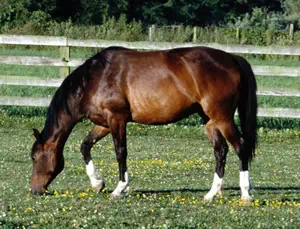|
 ARKANSAS ARKANSAS
Carcass Disposal State Regulations
General
Depending on circumstances, large animal carcass disposal may be regulated by a state's solid waste, medical waste, agriculture, or emergency management regulations. If your state does not provide specific guidance or regulations relating to large animal carcass disposal, check with your local health department, or city/county laws and ordinances.
In addition, during emergency situations and disasters (e.g., blizzards, floods, hurricanes, mass die-offs, etc.), consult with your local emergency officials, your state emergency planning agency, or the state veterinarian, to determine approved methods of carcass disposal.
Applicable Agencies and Regulations for Arkansas
Arkansas Livestock and Poultry Commission
Address: 1 Natural Resources Dr # 110, Little Rock, AR 72205
Contact Information: http://www.arlpc.org/staff.asp
Rules and Regulations: Carcass Disposal for Large Animals. Large animal carcasses may be disposed of in the following manner unless specified directly by the state veterinarian: Rendering, Burial, Extrusion, Cooking for Swine Food, Composting, Incineration, Burial on special order of state veterinarian (anthrax). Disposal options addressed:
- Rendering: Large animal carcasses may be submitted to a rendering facility in a sealed vehicle that does not allow drainage while being moved.
- Landfilling: Not allowed without prior approval of the State Veterinarian.
- Burial: Buried at a site at least 100 yards away from a well and in a place where a stream cannot be contaminated. Anthrax carcasses are to be covered with 1"" of lime. Others may need to be covered with lime to control odors. All are to be covered with at least 2 ft. of dirt.
- Burning: Incineration or open burning may be used as long as carcass is reduced to ash.
- Composting: Composting process must be managed to control odors, prevent fly larvae development, prevent animal depredation and be kept from leaching. The carcass(es) must be reduced to brittle/easily broken bone. A minimal peak temperature of 130°F and maintenance temperature of 110°F must be achieved during the process to make the product pathogen free. There are separate requirements for composting that is exposed to the weather and those that are not.
- Other Methods: Extrusion is an acceptable method to recover the protein for animal food, when possible, Cooking for Swine Feed (temperature of 212°F must be maintained for 30 minutes and a permit is required).
Rules and Regulations: Carcass Disposal of Poultry. Acceptable methods include incineration, composting, extrusion, rendering, cooking for swine feed, on-farm freezing. Disposal options addressed:
- Rendering: Shall be done without odor contamination, permit from Arkansas Livestock and Poultry Commission required. In the event of a major die-off, rendering will be the method of choice for disposal, except when death is caused by a disease entity.
- Burial: In the event of a major die-off, a ditch may be used when dug 2 to 4 feet deep and covered by at least 2 feet of dirt. Lime may be used to control odor if needed.
- Burning: In a controlled burn machine for the purpose of cooking carcass so as not to disseminate disease. This means cooking carcass until meat is rendered to ash.
- Composting: Must be practically odorless, ensure pathogenic bacteria are destroyed (150°F), carcasses must be reduced to nothing, only feathers and bones remaining. This takes about 10-14 days, and should be operated to where fly larvae are not a problem.
- Other Methods: Extrusion (enough heat must be generated to render finished product pathogen free), Cooking for Swine Feed (temperature of 212°F must be maintained for 30 minutes, permit from Arkansas Livestock and Poultry Commission required), On-Farm Freezing (carcasses will be frozen to a solid state before being removed from the farm).
More Information
The Cornell Waste Management Institute (CWMI) maintains a database of carcass disposal state regulations promulgated by state environmental, agricultural and other agencies. There may be additional information on this site, not found on VetCA, that can be helpful to veterinarians, ranchers and farmers. Click here to access the CWMI information for Arkansas.

Choose another state
|

